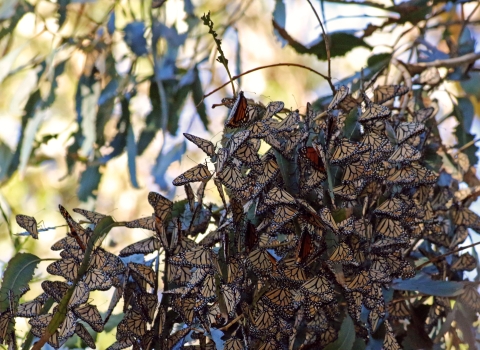This year is the 50th anniversary of the Endangered Species Act, a law that has been a powerful catalyst for conservation of America’s most treasured fish, wildlife, plants and their habitats. In the Pacific Region, our Tribes, state and federal agencies, and partners have joined with our dedicated staff to be the driving force behind the successes we share and the strength ensuring we can address the challenges ahead. Celebrate this milestone with us in this collection of stories as we reflect on past successes, assess current challenges, and envision an equally bright future for the next 50 years and beyond.
To the millions of tourists that visit each year, Hawaiʻi is known as the Aloha State or simply “paradise.” To conservationists, however, it’s known as the endangered species capital of the world. Similar to many islands across the world, one of the key threats to Hawaiʻi’s rich and unique biodiversity is biological invasions.
An “alien” species is a species introduced by humans outside of its natural range – those that spread and negatively impact native biological diversity are known as “invasive.” In Hawai’i, more than 5,000 alien species have been introduced. While only some of them have become invasive, their impacts have been severe, causing serious habitat degradation and species extinction.
Feral pigs, which are a cross between domestic pigs from Polynesia and Europe, and strawberry guava, a fruit tree originating from Brazil, are among the most destructive invasive alien species in Hawaiʻi.
The effects of pigs on Hawaiian ecosystems are far reaching and their impacts cascade across multiple ecological levels. For example, the pigs frequently feed on tree ferns, which are a dominant group in Hawaiʻi’s native forests. This kills the ferns, which causes drastic changes in forest ecosystem structure structure
Something temporarily or permanently constructed, built, or placed; and constructed of natural or manufactured parts including, but not limited to, a building, shed, cabin, porch, bridge, walkway, stair steps, sign, landing, platform, dock, rack, fence, telecommunication device, antennae, fish cleaning table, satellite dish/mount, or well head.
Learn more about structure and function. When the pigs forage for food they disturb the soil, killing plants and facilitating the invasion of non-native plant species. Pigs also spread invasive plants by dispersing seeds in their feces.
One invasive plant in particular, the strawberry guava tree, appears linked in a vicious positive feedback cycle with pigs. Pigs relish the fruits of these trees and have dispersed their seeds into native forests. Strawberry guava, like the pigs, is now common on most of Hawaiʻi’s main islands, forming dense stands, outcompeting native species, and destroying the habitats of native birds and insects.
Field biologists have relied on manual cutting and application of herbicide to control strawberry guava, as well as on trapping and hunting feral pigs. These methods are very labor intensive and expensive, and have not successfully addressed the impacts of these species on a large scale. However, the outcome of recent research efforts and comprehensive risk assessments is a promising biocontrol agent for strawberry guava: the Brazilian scale insect, which feeds exclusively on strawberry guava and can help reduce the growth and seed production of this invasive species invasive species
An invasive species is any plant or animal that has spread or been introduced into a new area where they are, or could, cause harm to the environment, economy, or human, animal, or plant health. Their unwelcome presence can destroy ecosystems and cost millions of dollars.
Learn more about invasive species . For the pigs, an improved and safer baiting method is being tested. Unmanned aircraft are also being tested to assist in invasive species monitoring, which can help inform and prioritize action on the ground.
Learn more about how the U.S. Fish and Wildlife Service is working with the State of Hawaiʻi to fight against invasive species.
A fence helped to keep feral swine out of select areas in Hawaii. Photo by USFWS.
This article originally featured on the IUCN World Conservation Congress website. The IUCN Congress provides a unique opportunity to decide how to move forward on a number of different conservation issues, including invasive species.
Story by Reese Brand Phillips, U.S. Fish and Wildlife Service, Pacific Islands Fish and Wildlife Office.
###
The U.S. Fish and Wildlife Service works with others to conserve, protect, and enhance fish, wildlife, plants, and their habitats for the continuing benefit of the American people. For more information, visit www.fws.gov/pacificislands, or connect with us through any of these social media channels at https://www.facebook.com/PacificIslandsFWS, www.flickr.com/photos/usfwspacific/, https://medium.com/usfwspacificislands or www.twitter.com/USFWSPacific.







